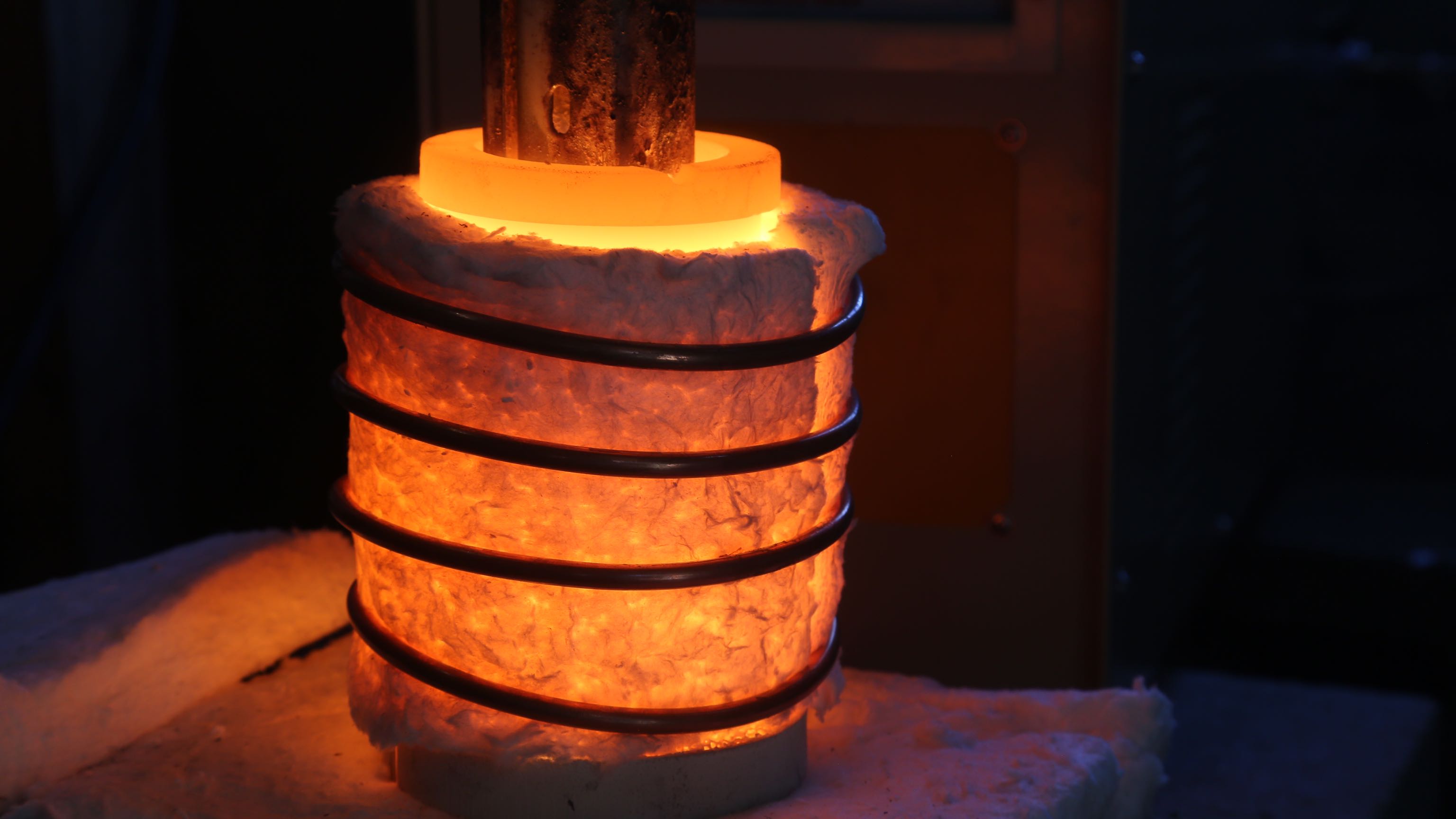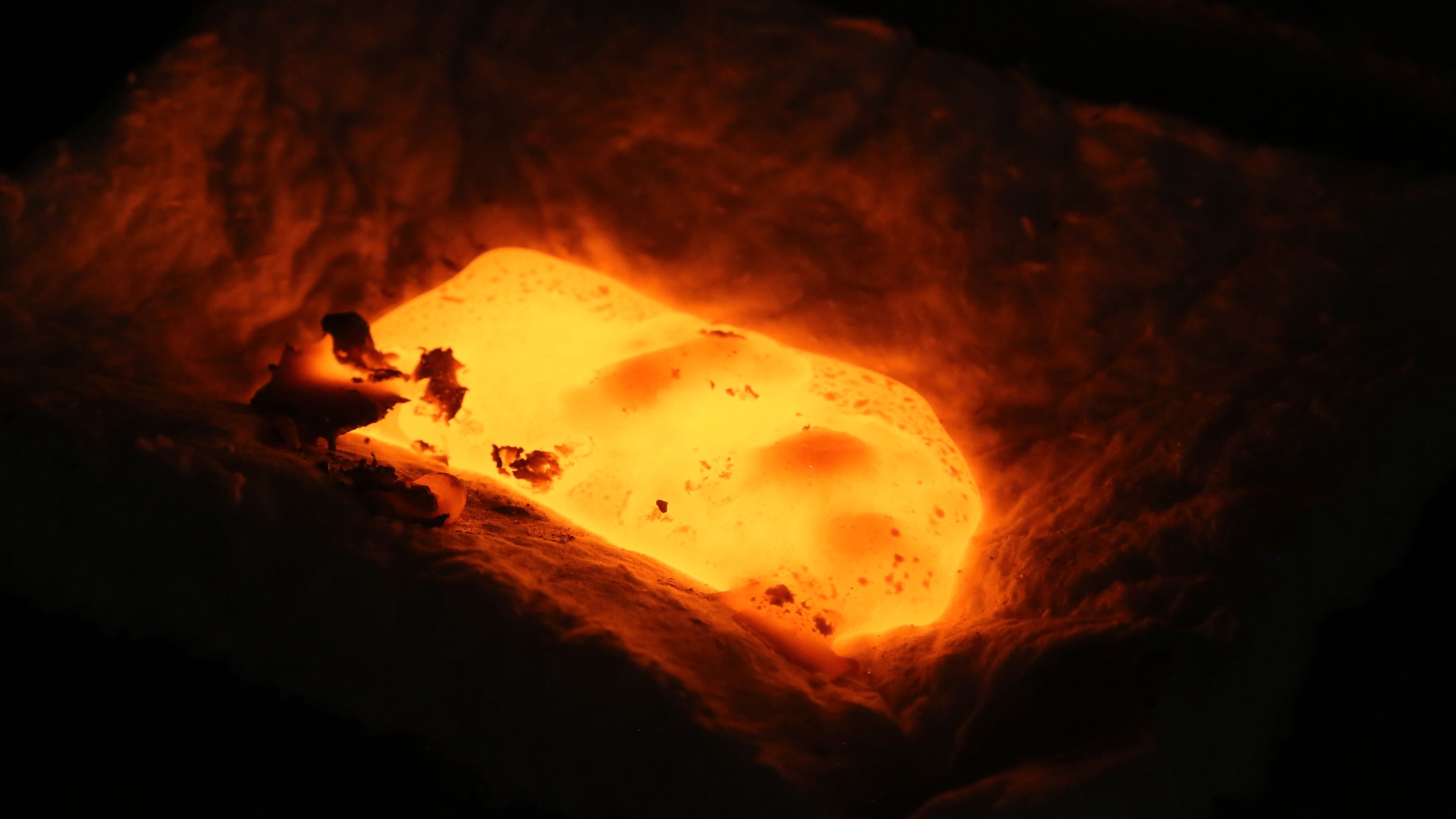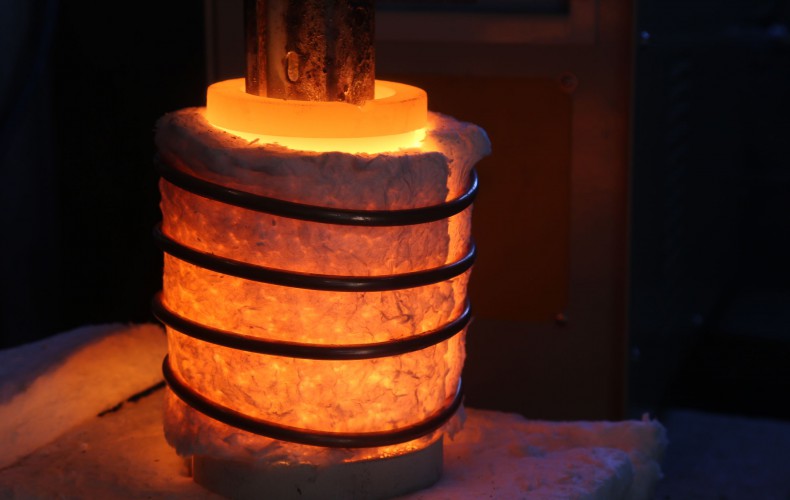After struggling with the problems with gravity feeding molten glass though a small nozzle (inherent with MIT’s glass printer design), we have decided to redesign our hotend to forcefully extrude molten glass (and other materials). Before we share details of the new design, the next several posts will be covering what we are building so that we can build everything we need for the new design in-house. To that end, our 15KW induction generator is capable of melting most anything at a flip of a switch. It’s seriously like magic! Here are the results from our first run.





6 Comments
Thanks for posting the video in the use of the 15KW 30-80 KHz High Frequency Induction Heater Furnace LH-15A. This unit looks really interesting as a replacement for a oil burning furnace.
I was wondering if you could give a bit more info on using this unit. I have read the chinglish instruction manual, but it is not very helpful.
The manual says you need a 65KVA electrical supply, which would be a 600A at 110V supply. This sounds like an error. What electrical service are you plugged into? What circuit breaker amperage?
In the video, it looks like you are using about an A6 sized crucible with a two turn induction coil. The copper started melting after a couple of minutes. Was this real time, or the video sped up?
What is the biggest crucible/melt which this unit can heat? I see in the above photo, you have also experimented with a 4 turn coil. Would this unit be capable of heating an A12 of cast iron to pouring temp? How about an A20?
Thanks.
I don’t know about running at 110v (doesn’t seem like a good idea to me – we ordered the 240V version), but it will draw up to around 45 amps @230 volts. The work coil runs at 100-800 amps (but at a lower voltage of course). Its on a 40-amp breaker.
The crucible we use for copper is a 8kg high purity graphite crucible. The video is sped up. Takes about 20 minutes for that size crucible.
The 4 turn coil is on a 4kg crucible. Essentially the induction generator is limited to a 1.5 meter length of copper (un-coiled of course).
We are able to run an A8 crucible for mild steel – which is 20 pounds of steel if it was full to the rim. If I recall correctly, iron is actually more difficult to melt with an induction than mild steel despite the lower melting temperature, but I would guess it could probably do it up to an A8 crucible. I think A8 is pushing it for this machine, so you would likely want a 25KW unit for an A12 crucible and a 48KW unit for an A20 size.
Keep in mind pouring steel is no trivial task with an A8 crucible. The first attempt caused my gloves to pretty much instantly start smoldering just from the ambient heat. We are going to make the whole device tiltable so we don’t have to directly handle it. It is *intense*!!!
Thanks for the quick response Jeshua. Also for the Youtube response about lost PLA shell casting.
45A@ 240V is about 11KVA, so I guess the 15KW rating is more a marketing thing.
Is it difficult to tune the heater electronics to the different loads for different sizes and metals? Does it need retuning during the melt as the metal moves, and more is added?
Shame they don’t offer a 400V three phase unit, most houses over here have that electrical service. The standard 240V, single phase throughout the house is on 16A breakers here.
The guys on the AlloyAvenue.com hobby casting forum are interested in your furnace, so I reposting your experience there. would be cool if you would join up and share your experience directly.
I guess a bit of sheet metal as a radiant energy shield would be a must for the pouring shank with cast steel. Would be cool if you could post a video of a stainless steel casting session. Do you need an inert atmosphere during the melt. Do you use regular green sand for that, or a refractory investment?
Cheers Mark!
The unit is actually rated for 7.5KW (35 amps @ 220V), but it seems to run well beyond that. I think they call it 15KW because that is how much is in the work coil at resonance. Or something like that. 😉
The unit auto-senses loads etc., but it can be a little tricky making the ideal coil for the crucible. Well at least for larger crucibles. As long as you stick with their recommended maximum length or less the coils should pretty much just work. Getting a slightly longer one than recommended to run on the A8 crucible well enough to melt steel took some trial and error.
They do offer a 3-phase version, it is the 25KW unit.
Thanks for the invite, I will look into signing up.
Yes, I definitely could have used a radiant shield for sure! But I think I am just going to make it tiltable which I think will be the safest setup – no need to even pick up the crucible then.
With steel we have used green sand (olivine based), petrobond (silica based) and investment formulated for steel casting. I’ll post a message when I cut a video of pouring some steel. If you subscribe to our Youtube channel you will get a notice there too – or feel free to drop me an email address.
I left out an answer about inert atmosphere. We have an argon tank for Titanium experimenting, but for steel we have been trying various type of slag. It seems bottle glass works well floating on top.
Thanks Jeshua. I look forward to that new video. I’ve just built an oil fired furnace which will take an A15, and maybe an A20 at a pinch if I am patient and optimize the burner. I guess I’ll see how that works out for me before splashing out on an induction furnace, but it sure is an attractive, clean technology.